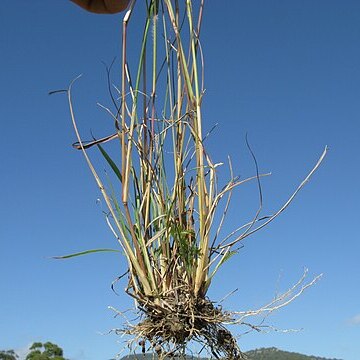Annuals or short-lived tufted perennials. Culms erect or decumbent, terete or lower internodes compressed, 30–90 (–135) cm high. Leaves with ribbed sometimes glandular veins, mostly glabrous and smooth; ligule a ciliate membrane, 0.3–0.6 mm long; blade flat and to 4.5 mm wide or convolute, straight, with capillary apex. Panicles loose or open, sometimes drooping, 20–60 cm long, 11–30 cm wide, scabrous; axils glabrous or bearded; lower branches usually ±whorled; branches divided, naked in lower 1–4 cm. Spikelets pedicellate, linear to oblong, (2.5–) 4.5–9 (–16) mm long, 0.8–1.5 mm wide, olive-green when young, sometimes cleistogamous; rachilla flexuose; florets (3–) 7–15 (–30), soon loosely overlapping, usually falling entire; apical floret vestigial. Glumes unequal, hyaline; lower glume ovate to triangular, 0.7–1.5 mm long; upper glume lanceolate, 1.2–1.8 mm long. Lemma lanceolate, 1.5–2 mm long, obtuse, membranous; lower lemmas often longer than upper lemmas. Palea hyaline; body spathulate, entire or notched by short keels, apically ciliolate; keels sparsely scaberulous; flaps ±as wide as body. Stamens 3; anthers 0.2–0.3 mm long. Grain terete to trigonous, flat or slightly concave on back, oblong-ellipsoid, 0.4–1 mm long, sometimes striatereticulate, reddish to dark brown, with a minute stipe.
More
A grass that grows in tufts. It can grow from seed each year or keep growing for a few years. It grows 30-90 cm high. The leaves are mostly near the base. The leaf blades are narrow and 1-3 mm wide. The flowers are green. The grain is oblong and smooth.
Grows in a wide range of deep, often alluvial soilsusually in flat to gently sloping, well-watered sites; also on roadsides, insaline soils and in hilly, sandstone or quartzite habitats.
More
It grows on quartzite and granite soils. It can grow in mud. It grows in subtropical locations.

